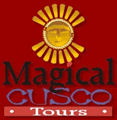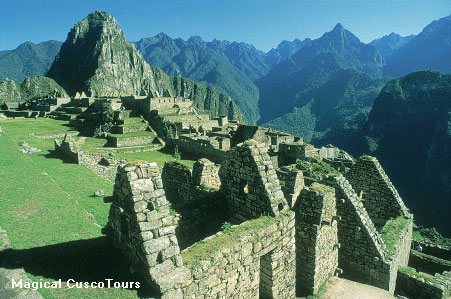 |
| Click On This Photo For Professional High Quality Peru Tours From Magical Cusco Tours Just Mention delange.org With Code Inka2010 Get A 4% Tour Discount With Any Package Tour Purchase! |
|---|
Photos, Pictures, Images
Descriptions, Information, & Reviews
Google Map To Ballestas Islands, Peru.
View Larger Map
We Are Proud Of Our SafeSurf Rating!

Click On Any Of The Following Links By Amazon.Com
For Books About Hiking Or Touring In Peru.
Some Are Must Have Books - If You Are Going To Peru.
We Also Are Including Some Great Music CD's & DVD's. No Obligation!
The Paracas National Reserve (340,000 hectares) was established in 1975 and is important for the protection of both bird life on the Paracas Peninsula and marine life in the sea. The Reserve is about 15km south from Pisco.
The Islas Ballestas (Ballestas Islands) are spectacular islands with many caves and arches, which provide shelter for thousands of seabirds and sea-lions. Although the islands fall just outside the Paracas National Reserve they are protected by separate legislation. The islands are home to over 150 species of marine bird including the Humboldt penguin, cormorants, boobies and pelicans. Even condors have been known to visit. On the shores can be seen large numbers of sea-lions and in the sea it is possible to encounter dolphins and even whales.
The Paracas National Reserve area played an important role in the Peruvian economy during the mid-nineteenth century. Large amounts of "guano" (birds' droppings) produced by the seabirds was gathered and exported to Europe for use as fertilizer. For many decades this industry was Peru's most important source of revenue. Remanants of this industry can still be seen upon the islands.
The Paracas peninsula also gave birth to the Paracas Culture, known for its pottery, textile and mummies.
The Paracas people formed a well-developed culture from about 1300 BC until 200 AD, long time before the Inca. In Paracas there is also the Candelabra or "Candelabro", a giant figure etched into a hill, similar to the Nazca Lines. Nobody knows who made this drawing or what it means. Although it is called the "candelabra", the candle, it probably represents a cactus.
Visitors are not allowed onto the islands but the views of wildlife from the boats are excellent. The tours also pass the "Candelabro"; which is a 50 m long candelabra - shape traced onto a desert hillside overlooking the sea.
The only way for the tourist to get to the Islas Ballestas is by taking an organised tour (there are many agencies in Pisco and Paracas). The tours are inexpensive costing about $10 - 15 US and comprise a speedboat trip accompanied by a guide for about 2 hours. The boats depart between 08:00 and 10:30 AM from the fishing jetty at El Chaco Port near the village of Paracas.
Sea Bird Guano And The Ballestas Islands:
Guano was widely used by the native populations of pre-Spanish Latin America for centuries as a fertilizer to increase crop yields. However, it was not until the early 1800s that guano was rediscovered by the Europeans to have valuable agricultural benefits as a fertilizer. The best source of guano was discovered on a series of islands off the coast of Peru which are barren and rocky with no vegetation due to lack of rain in the area. Peru's primary guano islands are the Chinchas, the Ballestras, the Lobos, and the Macabi and Guanape islands. Peru's guano was considered to be the best for farming.
Guano is made up of bird droppings amassed over hundreds of years due to weather and ocean currents. What distinguished Peru's guano from guano found at other sources around the world was due to the unique weather conditions found along Peru's coast. Because of the Humboldt or Peruvian Current, which flows cold water from Antarctica to the equator along Peru's coast, this creates an interesting weather pattern where the cold water and warm air prevents the fall of rain in this part of the world. Due to the lack of rain on the islands along Peru's coast,
the accumulated bird droppings are baked in the dry atmosphere which preserves the nitrates in those droppings from evaporating, thus maintaining its effectiveness. Another factor that made guano an effective fertilizer was that its contents originated from fish-eating birds.
Remnants of the guano industry can be seen on the Ballestas Islands and some modern day factories can be seen on other islands in the area.
We visited the Ballestas Islands on April 13, 2006 at about 8:15 AM.
This page is for information purposes only and while we have made every effort to be accurate, it is the travelers responsibility to make the appropriate choice as to which hotels to use in Peru.
We found that when touring Peru, Magical Cusco Tours gave us the best service of all. They even arranged very personal tours based upon our ages and experience. They were there for us whenever we needed them.
Click on any of their links on our pages and they will give you a 4% discount for taking their package tours. Mention delange.org. Merchant Code Inka2010 for your discount! We suggest letting Ana Maria handle your tour.
Note: The 4% discount applies to package tours only! Discount does not apply to hotel bookings, domestic or international tickets, meals or any other service booked as a single activity.
Magical Cusco Tours also has a culinary tour that you may enjoy.Click Here For: Taste Of Peru.com their culinary tour page.
If you prefer to book tours and travel on your own. We also have links to Priceline.Com on our pages; as we have used them for some of our tours, and experienced no problems with them, either.
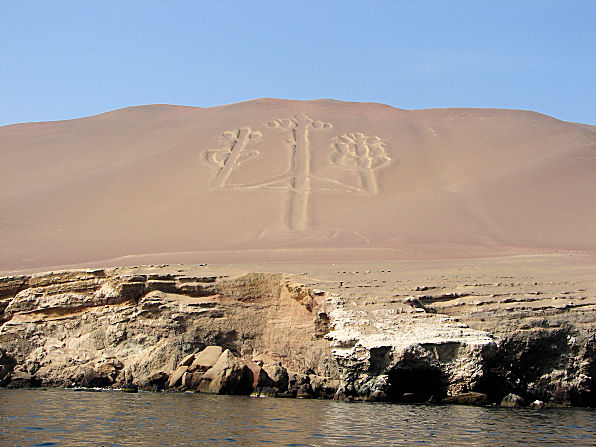
The "Candelabra" Of Paracas 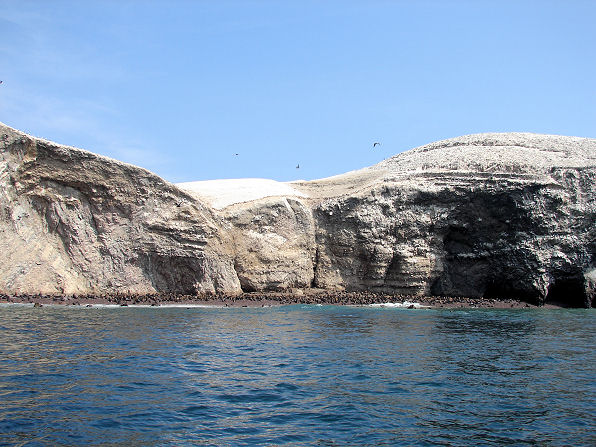
South American Sea Lion Colony, Otaria flavescens,
formerly Otaria byronia; On Ballestas Islands. 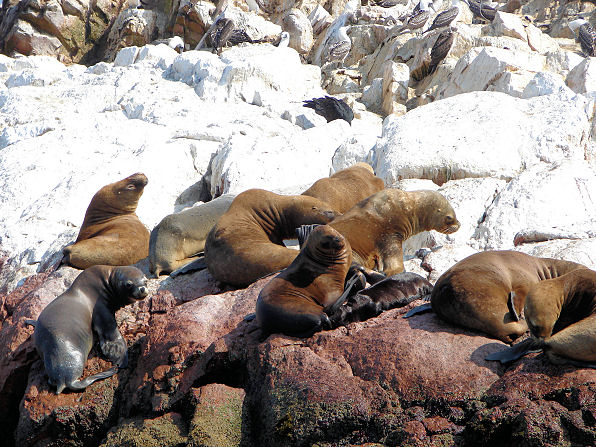
South American Sea Lion Colony, Otaria flavescens,
formerly Otaria byronia; On Ballestas Islands.

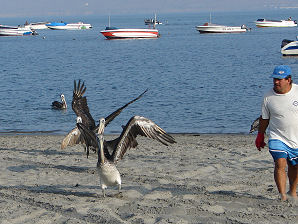
This Man And His Friends
Peruvian Pelican, Pelecanus thagus Played All Over The Beach
Peruvian Pelican, Pelecanus thagus 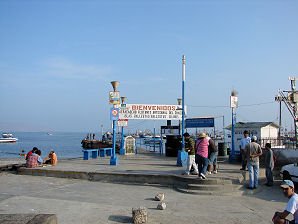
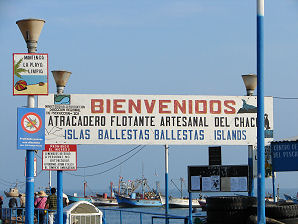
El Chaco Port
We Wait For Our Boat Here El Chaco Port
There Will Soon Be A Crowd 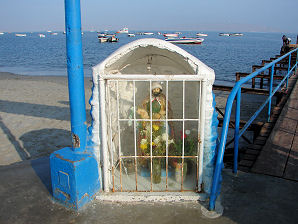
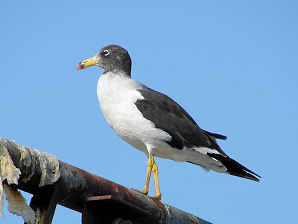
Saint Peter
Saint Of Fishermen Franklin's Gull, Larus pipixcan
Winters In Peru 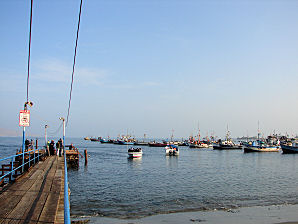
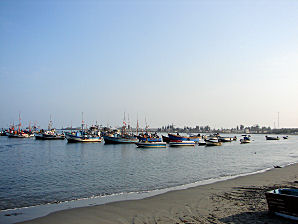
Tour Boats Start To Arrive Tour Boats Start To Arrive 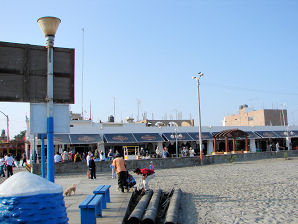
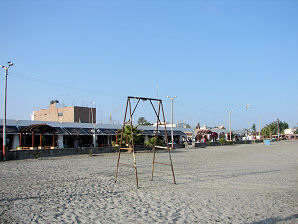
Tourist Shops Tourist Shops 
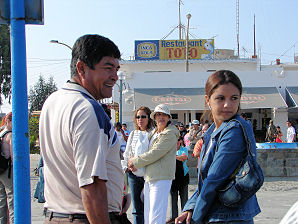
Our Taxi Our Driver And His Daughter 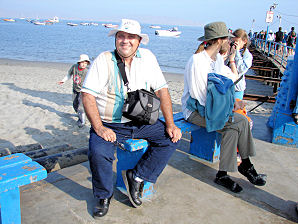
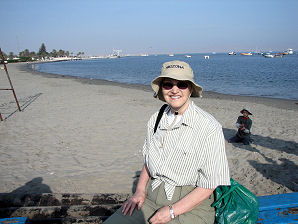
George DeLange
Is Ready To Go! Audrey DeLange
Too! 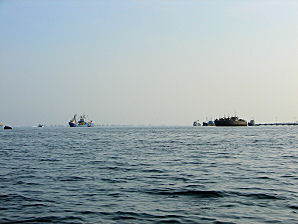
We Are On Our Way! Many Ships Docked Here! 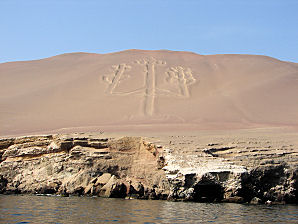
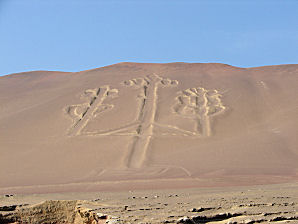
Wow! We See
The "Candelabra" Of Paracas Wow! We See
The "Candelabra" Of Paracas 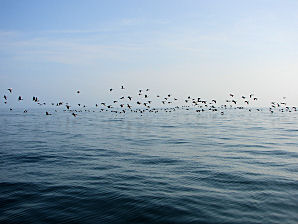
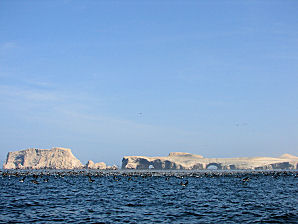
We See Thousands Of Sea Birds More Sea Birds Everywhere! 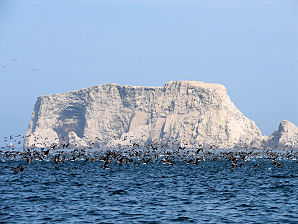
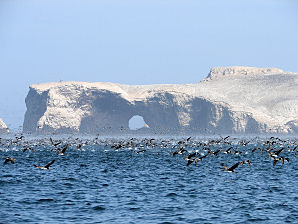
Red - Legged Cormorant - Chuitas
Phalacrocorax gaimardi Red - Legged Cormorant - Chuitas
Phalacrocorax gaimardi 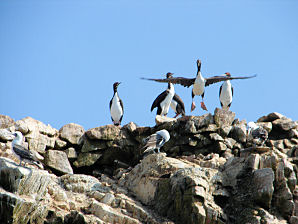
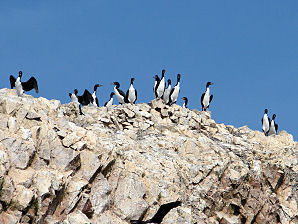
Guanay Cormorant
Phalacrocorax bougainvillii Guanay Cormorant
Phalacrocorax bougainvillii 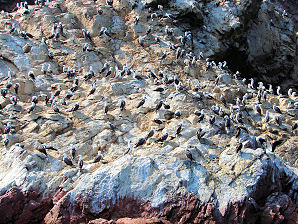
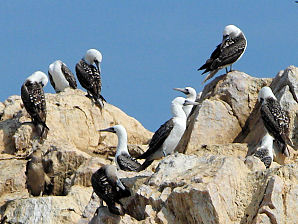
Peruvian Booby, Sula variegata Peruvian Booby, Sula variegata 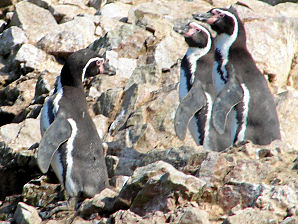
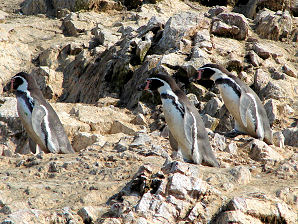
Humboldt Penguins
Spheniscus humbolldti Humboldt Penguins
Spheniscus humbolldti 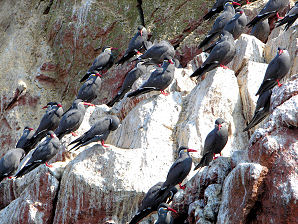
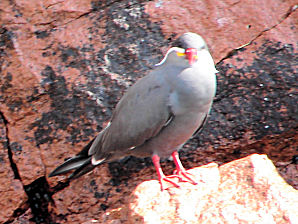
Incan Terns
Zarcillos Larosterna inca Incan Terns
Zarcillos Larosterna inca 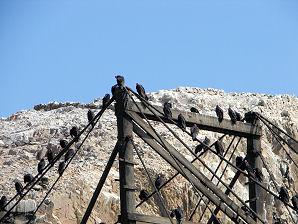
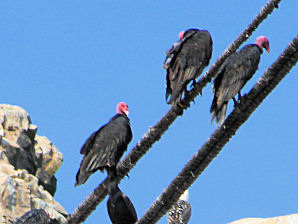
Turkey Vulture, Cathartes aura Turkey Vulture, Cathartes aura 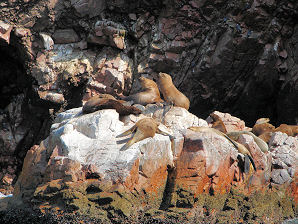
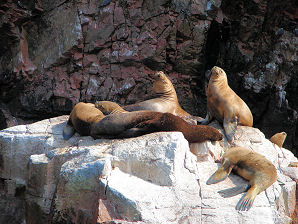
Sea lion, Otaria byronia Sea lion, Otaria byronia 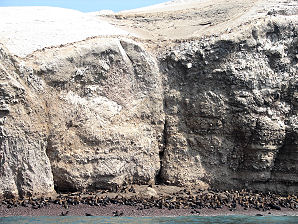
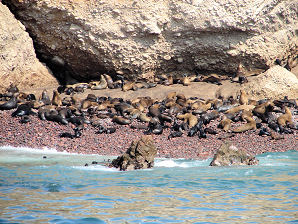
Sea Lion Colony, Otaria byronia Sea Lion Colony, Otaria byronia 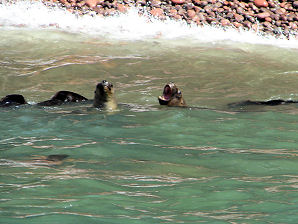
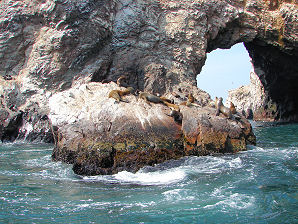
Sea Lions Playing Sea Lions Sun Bathing 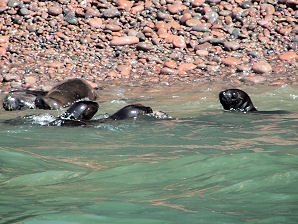
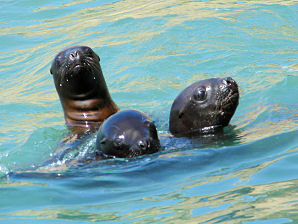
South American Fur Seal
Arctocephalus australis South American Fur Seal
Arctocephalus australis 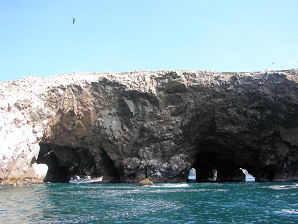
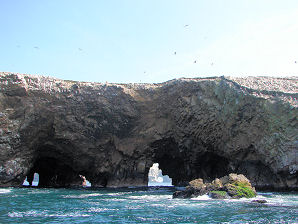
Ballestas Island Ballestas Island 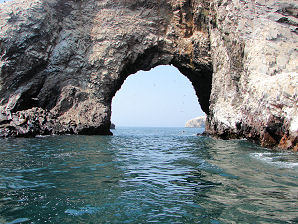
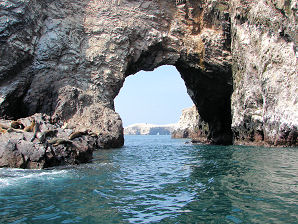
Ballestas Island Ballestas Island 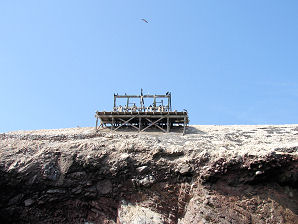
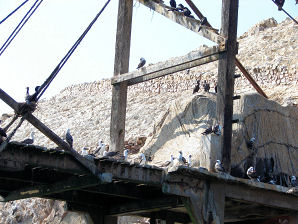
Guano Industry Remnants Guano Industry Remnants 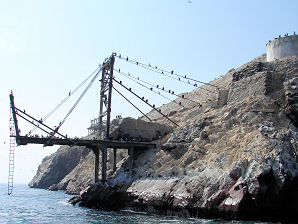
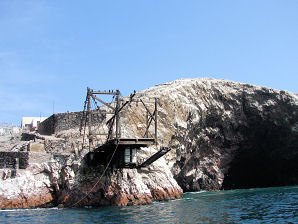
Guano Industry Remnants Guano Industry Remnants 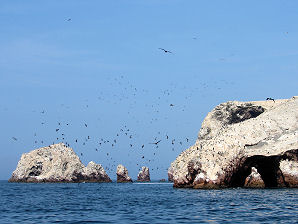
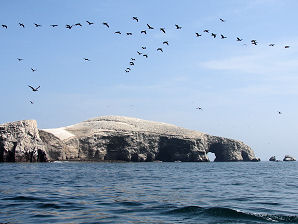
A Last View Of The Islands And We Head For Home 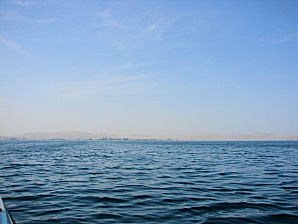
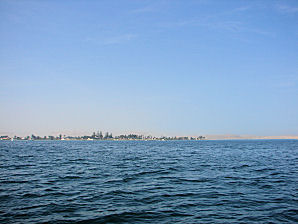
El Chaco Port
Is In The Distance There It Is! 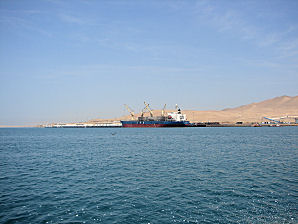
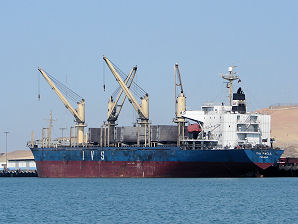
Guano Fertilizer Ship At A Neighboring Island 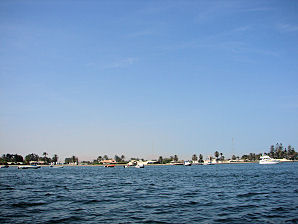
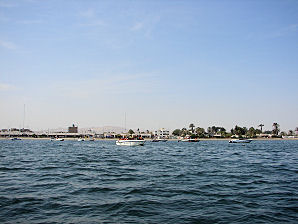
An Exclusive Home Area We Meet Other Tour Boats 
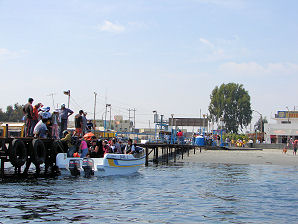
We See The Tourist Area Ballestas Island
Tour Boats Unloading
We Are Proud Of Our SafeSurf Rating!

Click On Any Of The Following Links By Amazon.Com
For Books About Hiking Or Touring In Peru.
Some Are Must Have Books - If You Are Going To Peru.
We Also Are Including Some Great Music CD's & DVD's. No Obligation!

Back To Peru Tours Main Page
Back To DeLange Home Page


The Paracas National Reserve (340,000 hectares) was established in 1975 and is important for the protection of both bird life on the Paracas Peninsula and marine life in the sea. The Reserve is about 15km south from Pisco.
The Islas Ballestas (Ballestas Islands) are spectacular islands with many caves and arches, which provide shelter for thousands of seabirds and sea-lions. Although the islands fall just outside the Paracas National Reserve they are protected by separate legislation. The islands are home to over 150 species of marine bird including the Humboldt penguin, cormorants, boobies and pelicans. Even condors have been known to visit. On the shores can be seen large numbers of sea-lions and in the sea it is possible to encounter dolphins and even whales. The Paracas National Reserve area played an important role in the Peruvian economy during the mid-nineteenth century. Large amounts of "guano" (birds' droppings) produced by the seabirds was gathered and exported to Europe for use as fertilizer. For many decades this industry was Peru's most important source of revenue. Remanants of this industry can still be seen upon the islands. The Paracas peninsula also gave birth to the Paracas Culture, known for its pottery, textile and mummies. The Paracas people formed a well-developed culture from about 1300 BC until 200 AD, long time before the Inca. In Paracas there is also the Candelabra or "Candelabro", a giant figure etched into a hill, similar to the Nazca Lines. Nobody knows who made this drawing or what it means. Although it is called the "candelabra", the candle, it probably represents a cactus. Visitors are not allowed onto the islands but the views of wildlife from the boats are excellent. The tours also pass the "Candelabro"; which is a 50 m long candelabra - shape traced onto a desert hillside overlooking the sea. The only way for the tourist to get to the Islas Ballestas is by taking an organised tour (there are many agencies in Pisco and Paracas). The tours are inexpensive costing about $10 - 15 US and comprise a speedboat trip accompanied by a guide for about 2 hours. The boats depart between 08:00 and 10:30 AM from the fishing jetty at El Chaco Port near the village of Paracas. Sea Bird Guano And The Ballestas Islands: Guano was widely used by the native populations of pre-Spanish Latin America for centuries as a fertilizer to increase crop yields. However, it was not until the early 1800s that guano was rediscovered by the Europeans to have valuable agricultural benefits as a fertilizer. The best source of guano was discovered on a series of islands off the coast of Peru which are barren and rocky with no vegetation due to lack of rain in the area. Peru's primary guano islands are the Chinchas, the Ballestras, the Lobos, and the Macabi and Guanape islands. Peru's guano was considered to be the best for farming. Guano is made up of bird droppings amassed over hundreds of years due to weather and ocean currents. What distinguished Peru's guano from guano found at other sources around the world was due to the unique weather conditions found along Peru's coast. Because of the Humboldt or Peruvian Current, which flows cold water from Antarctica to the equator along Peru's coast, this creates an interesting weather pattern where the cold water and warm air prevents the fall of rain in this part of the world. Due to the lack of rain on the islands along Peru's coast, the accumulated bird droppings are baked in the dry atmosphere which preserves the nitrates in those droppings from evaporating, thus maintaining its effectiveness. Another factor that made guano an effective fertilizer was that its contents originated from fish-eating birds. Remnants of the guano industry can be seen on the Ballestas Islands and some modern day factories can be seen on other islands in the area. We visited the Ballestas Islands on April 13, 2006 at about 8:15 AM. This page is for information purposes only and while we have made every effort to be accurate, it is the travelers responsibility to make the appropriate choice as to which hotels to use in Peru. We found that when touring Peru, Magical Cusco Tours gave us the best service of all. They even arranged very personal tours based upon our ages and experience. They were there for us whenever we needed them. Click on any of their links on our pages and they will give you a 4% discount for taking their package tours. Mention delange.org. Merchant Code Inka2010 for your discount! We suggest letting Ana Maria handle your tour. Note: The 4% discount applies to package tours only! Discount does not apply to hotel bookings, domestic or international tickets, meals or any other service booked as a single activity.
Magical Cusco Tours also has a culinary tour that you may enjoy.Click Here For: Taste Of Peru.com their culinary tour page.
|
 |
| The "Candelabra" Of Paracas |
|---|
 |
| South American Sea Lion Colony, Otaria flavescens, formerly Otaria byronia; On Ballestas Islands. |
 |
| South American Sea Lion Colony, Otaria flavescens, formerly Otaria byronia; On Ballestas Islands. |
 |  |
| This Man And His Friends Peruvian Pelican, Pelecanus thagus | Played All Over The Beach Peruvian Pelican, Pelecanus thagus |
|---|---|
 |  |
| El Chaco Port We Wait For Our Boat Here | El Chaco Port There Will Soon Be A Crowd |
 |  |
| Saint Peter Saint Of Fishermen | Franklin's Gull, Larus pipixcan Winters In Peru |
 |  |
| Tour Boats Start To Arrive | Tour Boats Start To Arrive |
 |  |
| Tourist Shops | Tourist Shops |
 |  |
| Our Taxi | Our Driver And His Daughter |
 |  |
| George DeLange Is Ready To Go! | Audrey DeLange Too! |
 | |
| We Are On Our Way! | Many Ships Docked Here! |
 |  |
| Wow! We See The "Candelabra" Of Paracas | Wow! We See The "Candelabra" Of Paracas |
 |  |
| We See Thousands Of Sea Birds | More Sea Birds Everywhere! |
 |  |
| Red - Legged Cormorant - Chuitas Phalacrocorax gaimardi | Red - Legged Cormorant - Chuitas Phalacrocorax gaimardi |
 |  |
| Guanay Cormorant Phalacrocorax bougainvillii | Guanay Cormorant Phalacrocorax bougainvillii |
 |  |
| Peruvian Booby, Sula variegata | Peruvian Booby, Sula variegata |
 |  |
| Humboldt Penguins Spheniscus humbolldti | Humboldt Penguins Spheniscus humbolldti |
 |  |
| Incan Terns Zarcillos Larosterna inca | Incan Terns Zarcillos Larosterna inca |
 |  |
| Turkey Vulture, Cathartes aura | Turkey Vulture, Cathartes aura |
 |  |
| Sea lion, Otaria byronia | Sea lion, Otaria byronia |
 |  |
| Sea Lion Colony, Otaria byronia | Sea Lion Colony, Otaria byronia |
 |  |
| Sea Lions Playing | Sea Lions Sun Bathing |
 |  |
| South American Fur Seal Arctocephalus australis | South American Fur Seal Arctocephalus australis |
 |  |
| Ballestas Island | Ballestas Island |
 |  |
| Ballestas Island | Ballestas Island |
 |  |
| Guano Industry Remnants | Guano Industry Remnants |
 |  |
| Guano Industry Remnants | Guano Industry Remnants |
 |  |
| A Last View Of The Islands | And We Head For Home |
 |  |
| El Chaco Port Is In The Distance | There It Is! |
 |  |
| Guano Fertilizer Ship | At A Neighboring Island |
 |  |
| An Exclusive Home Area | We Meet Other Tour Boats |
 |  |
| We See The Tourist Area | Ballestas Island Tour Boats Unloading |
We Are Proud Of Our SafeSurf Rating!

Click On Any Of The Following Links By Amazon.Com
For Books About Hiking Or Touring In Peru.
Some Are Must Have Books - If You Are Going To Peru.
We Also Are Including Some Great Music CD's & DVD's. No Obligation!

Back To Peru Tours Main Page
Back To DeLange Home Page






